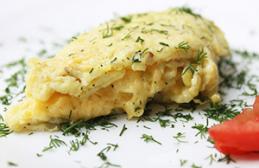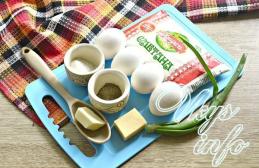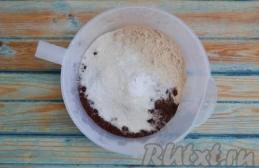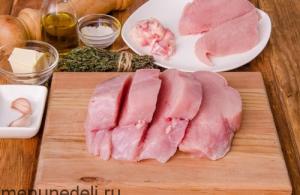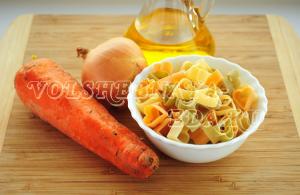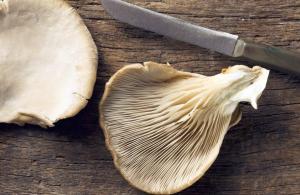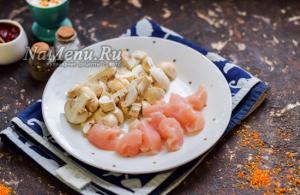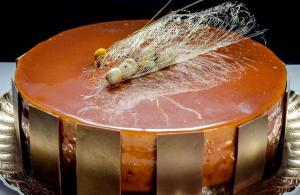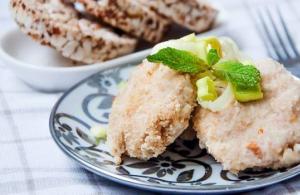A cheese plate is one of the most revered and beloved dishes of the French, which will turn the most ordinary evening into a social event. This delicacy can be served as an appetizer, as an addition to drinks (mainly wine) and even for dessert. It all depends on the types of cheese used, their order and method of serving. Let's find out in more detail what a cheese plate is: study the photo, consider the composition and popular design options.
In Russia and other CIS countries, the culture of eating cheeses as a separate dish is not widespread. Although now in some European restaurants you can try an analogue of a cheese plate. Of course, the assortment and presentation of the dish will differ from the traditional version, but for now this is the only opportunity to join French cuisine in our homeland.
Another option would be to make your own cheese plate at home. Despite the apparent complexity, this is a fairly simple procedure. It is enough to follow simple recommendations and do not skimp on various types of expensive cheeses.
A little history about the cheese plate

So, what is a cheese plate and what does it go with? When talking about this dish, we most often mean the way of serving an assortment of different types of cheeses. The basis for laying out the main product is tablet round or rectangular in shape, made of durable wood. Serving on porcelain plate or little girl. But this option is more of an innovation than a tradition.
This dish should not be confused with simply sliced cheese, where only 2-4 types of fermented milk products are used, laid out on a plate.
Firstly, when serving normally, earthenware, glass or porcelain dishes of any shape and size are used. Secondly, the types of cheese are in no way related to each other. Most likely, they are chosen at random and used in ordinary sandwiches every day. Thirdly, a cheese plate is a special art of arranging different types of cheese, which are combined into one complete composition.
Varieties for proper serving
All cheeses are divided into small subgroups, depending on the richness of taste and density.
It is acceptable to use such varieties:
- fresh: ricotta, feta, mozzarella;
- soft: Neuchatel, Chaurs;
- rich, tender: brie, camembert;
- semi-soft: gouda, edam;
- hard: Maasdam, Emmental;
- spicy, hard: gruyere, parmesan;
- varieties made from goat or sheep milk: chevrette, pecorino;
- spicy, piquant (with noble mold): Roquefort, Dorblue, Gorgonzola.
Rules for composing a cheese plate
There are several principles for designing the “correct” cheese platter. They will help you create an exquisite dish according to the rules of haute French cuisine. What distinguishes it from ordinary slicing?

An exquisite cheese plate is a dish that is served on special, festive occasions. A piece of processed cheese “Druzhba”, of course, can be liked by everyone and enchant with just the memory of childhood. But for gourmet food it is better not to take it. The same goes for other types of product that you can buy at any supermarket to make a sandwich or add to pizza.
The whole point of a cheese plate is that it uses rare, noble varieties that are practically not eaten in ordinary life.
Aroma development
Particular attention is paid to presentation. It is customary to prepare the dish in advance, wrap it in film or foil and put it in the refrigerator to wait in the wings. But 30-40 minutes before serving, remove the plate so that each of the varieties warms up to room temperature, fully revealed the taste and aroma.
Quantity and quality
A real cheese plate is a variety of cheeses, formed from four or more brands. More is possible, less is not worth it. Although moderation must be observed in everything.
If there are too many varieties, they simply will not fit on one board and will “conflict”. Each slice must lie free, without drowning out or interrupting its less piquant “neighbor”.
There is also a design rule regarding quantity. It is advisable to serve an odd number of species, for example 5, 7 or 9.
You can, of course, use a pair of cheeses, but then you should make sure that there are no true connoisseurs. Otherwise their feelings may be hurt.
You should choose fresh cheeses at the highest possible price. Ideally, they should be imported or produced using ancient recipes, traditional methods of aging without chemicals, or suspicious preservatives. It is better to buy the product in special stores where preliminary tasting is possible.
Subtleties of display
When arranging cheeses when decorating a plate, it is worth remembering their delicacy. This is a very delicate, fastidious product. It easily absorbs foreign odors and takes on tastes. Therefore, it is necessary to leave a little space between different varieties. Then each group will retain its original characteristics.
Location rules

When laying out cheeses, you need to remember one little secret: you should start with softer, fresher varieties, gradually moving to dense, rich ones. The composition is completed with aged, piquant varieties that leave a pleasant aftertaste for a long time.
Highlight 2 traditional design methods. According to the first one, the cheeses are laid out clockwise from soft to hard. According to the second, the composition begins from the center, ending with the edges of the board. The basic rule is that all varieties should be cut into even pieces and beautifully arranged. Arranging cheeses so that it is beautiful is a whole art.
Cheese shape and cutting
Round cheeses are usually cut into small pieces sections, other - cubes or small blocks. This is done so that every connoisseur can taste the taste as a whole, i.e. the middle and the crust. It is known that in some varieties different areas have different taste characteristics.
Some housewives play up the cheese plate by forming various figures from the pieces. For example, triangles, circles, hearts, animals, stars, flowers, leaves. They are convenient to make using cookie cutters. Although it will be much more difficult to form a composition from non-standard figures.
Selecting a serving plate
Firmer, richer cheeses look beautiful on stiff wooden trays. For soft, delicate varieties, glass and porcelain dishes are more suitable. You can place several plates on one large board to make the composition look cohesive.
Availability of cutlery
Some types of cheeses can be served without slicing, serving for each type separate knife. If the cheeses are laid out in portions in the form of pieces, serving wooden sticks and skewers is allowed.
Products to complement the dish

When tasting, the taste does not reveal itself immediately. To “spur” this process, additional products are used. For example, fresh grapes or nuts (cashews, almonds) are suitable for soft blue cheeses. Thicker, spicy varieties go well with avocados and dried fruits (dates, dried apricots, raisins, figs). You can also use snacks, crackers, olives, confiture, and fresh fruit. There are no special rules for the combination of additional and main products. Usually several items are served so that each taster chooses the most appetizing combination.
Additional products often become part of the decoration of the dish. For example, cheese slices are often served with seasonal greens, mint sprigs, coffee beans, arugula leaves, and other spices. The most controversial ingredient for the composition is balsamic vinegar. Some gourmets are inclined to use this component, while others completely exclude it. Therefore, the last word remains with the one who prepares the dish.
A cheese plate is a haute cuisine dish. It requires competent compilation, design, and a responsible approach to presentation and decoration. It is quite appropriate to serve it at a reception, important event, or dinner party.
Some delicious photos

Irina Kamshilina
Cooking for someone is much more pleasant than cooking for yourself))
Mar 6 2017
Content
Sliced cheese is a universal appetizer for all occasions that will decorate any holiday table and complement a modest meeting with friends over a glass of wine. Find out what types of cheese can be combined, how to cut it correctly and what to serve it with, what fruits and sauces should be complemented.
Composition of a cheese plate
First, you need to think over the main menu, because the composition of the cheese plate depends on the main dishes (meat, chicken or fish), types of alcohol, and national characteristics of the cuisine. If light European snacks, dry wines, champagne predominate, then cheese platter 1 is suitable. Number 2 - goes well with Slavic or Russian cuisine and strong alcoholic drinks: vodka, cognac and fortified wines. The third option is universal, but gourmets recommend serving it with fish dishes, lean meat, vegetable salads, semi-sweet wines and stronger drinks.
Assortment 1:
- expensive cheese with noble blue mold: Roquefort, Dorblue, Gorgonzola, Danablue;
- soft cow cheeses with a moldy rind: brie, camembert;
- hard cheeses: Parmesan, Pecorino, Gruyère or Emmental;
- additions: figs, pears, apples, grapes, plums, strawberries, dates, spinach, honey, berry jam, onion marmalade, almonds, walnuts.
Assorted 2:
- hard or semi-hard cheese: Russian, Dutch, Gouda, Edam;
- pickled cheeses: feta cheese, Adyghe, Suluguni, Chechil;
- smoked: suluguni or processed sausage cheese;
- Additives: cilantro, dill, parsley, green onions, thin pita chips, walnuts, nut sauce, crackers.
Assorted 3:
- pickled cheese: feta, mozzarella;
- hard, semi-hard varieties: Maasdam, Emmental, Gruyère, cheddar, Comté;
- piquant French cheeses made from goat's and sheep's milk: chevre, chabichu, brunost;
- Additives: cherry tomatoes, peppers, peaches, grapes, figs, dried apricots, raisins, olives, walnuts, cashews, rosemary, arugula, olive oil, honey.

Cheese plate decoration
According to the accepted rules for designing a cheese plate, it must contain at least three types of cheese. It is recommended to arrange them according to the degree of spice and hardness, not to place too aromatic varieties next to them, and to alternate them with fruits, vegetables, and herbs. Small bowls with honey and jams are placed in the center of the plate. A few tips to ensure your cheese board is perfect:
- The cheese should be arranged clockwise from the freshest or softest to the spicy or hardest. You can use another principle: from the center of the plate to the edges.
- You don’t need to cut the entire piece of cheese, but only put in a few slices. Serve with a special knife and the remaining large piece.
- Do not put bread on a plate with cheeses. In Italy, France, and other European countries, cheese is never served with bread - only fruits, nuts, and vegetables.
- Remove the pre-prepared cheese plate from the refrigerator (half an hour before serving) to allow the food to come to room temperature.
- Serve pieces of cheese, cut so that 3 components are visible: crust, edge, middle.
- Prepare the correct amount of cheese. You can calculate it like this: 100-150 grams of product for each guest.
- Serve skewers for soft and hard varieties on a common board so that it is convenient to transfer the cheese to your plate.
How to cut cheese beautifully
For each type of cheese there is a specific cutting technique. It is important to cut each type of cheese on a separate board, since the delicate texture of the cheese easily absorbs the tastes of foreign products, especially harsh ones, such as onions, garlic, meat, and smoked meats. The cheese should be removed from the refrigerator half an hour before slicing, but should be stored in its packaging. The finished dish can be covered with a glass lid and kept refrigerated until serving. Instead of a lid, cling film is sometimes used.
Soft mold cheeses should be cut into triangles, hard cheeses into thin slices using a wide, sharp knife. For a children's table, you can cut out any cheese figures using cookie cutters. Mozzarella is served in the form of balls or cut into rectangular or semicircular pieces of medium thickness, depending on the shape of the head. Feta is served in cubes, brine suluguni - in small round slices. A special knife with a wavy blade will help you cut cheese beautifully. You can purchase such a device at any kitchenware store.

Cheese plate
In the original, spicy and hard varieties require a round wooden plate. Soft cheeses should be served on a glass saucer or a special plate with a thin stem. Now the product is served in ceramic, porcelain, earthenware, depending on the table decoration. In stores you can buy cheese plates with dividing compartments for different varieties and snacks, with a glass lid and a small carving knife included.
How to make a cheese plate
The first thing you need is to choose high-quality, fresh cheese of foreign or national production. To do this, it is better to go to specialized stores, where you can not only try the real product, but also get recommendations from consultants. It is not necessary to buy cheese immediately before the feast - it can be stored for a long time in a cool place. Making a cheese plate is very simple: you need to thinly slice the product, carefully place it on a plate, add the rest of the ingredients and sauce.
Cheese plate with honey and nuts
These products are found in almost every home. A cheese plate with honey and nuts can be prepared in a minimal amount of time. You can use any honey to suit your taste: buckwheat, forest, meadow honey are suitable for rich hard cheeses; for fatty and soft cheeses – light, light. Try elite cheeses with a long ripening period: their quality and exquisite taste will pleasantly surprise you. An original addition would be a few drops of balsamic vinegar and sunflower seeds. Cheese with honey is a wonderful, win-win combination of products and an excellent snack.
Cheese plate with grapes
Another gourmet dish option is a cheese plate with grapes. Additionally, serve light honey in a separate bowl. Choose large varieties of grapes, arrange them one berry at a time or a whole bunch on the side, and you can use apples, pears, and plums as a supplement. These decorations are suitable for soft, aromatic Brie and Camembert cheeses, creamy Dorblu and Gorgonzola.

How to Serve a Cheese Plate
You can serve a cheese plate with appetizers or desserts. In the second case, you need to supplement the treat only with fruits and nuts, cut into thin, small pieces and place on a common dish. For a classic presentation, use different types of cheese, one large plate, or several small ones if you have a long table and many guests. Next to the plate you can place a glass with breadsticks, olives or vegetables. Do not place cheese near sliced meats or baked goods.
Cheese platters can now be found in almost every restaurant. This is a favorite snack for many people and takes no more than ten minutes to prepare. The main rules for serving cheese from famous chefs:
- Dense, rich cheeses should be combined with similar wines that have a bright, strong aroma. Conversely, you need to choose softer types of cheese for light drinks.
- Chefs try to compose a dish so that it contains 6 different tastes: fresh, neutral, sweetish, tender, bright, seasoned, spicy.
- In establishments with a rich wine list, it is customary to add to the menu a list of cheese varieties suitable for a particular wine.
- Camembert, brie and some blue cheeses are sometimes served as whole heads, weighing about 300 grams.
- The cheese is cut in such a way that 3 components are visible: crust, edge, core. Partial leakage of the liquid middle from soft varieties onto the board is allowed.
Video: Decorating a cheese plate
Found an error in the text? Select it, press Ctrl + Enter and we will fix everything!Discuss
Cheese plate - assorted composition. How to beautifully cut cheese and decorate a cheese plate for a holiday table with photos
A cheese plate has long ago turned from a mysterious phrase into a rather shabby snack offered in almost all mid-level restaurants and cafes. Maybe this wouldn’t be so bad if it weren’t for one “but”: behind the line on the menu indicating a cheese platter of high-quality and expensive cheeses, anything can be hidden, and, as a rule, it’s “anything.” " has nothing to do with what should actually be called a cheese plate.
Let's figure it out? The first task is to find out what these words mean, the second is to understand the general principle of forming a cheese plate, try to assemble it at home yourself, get your hands on it, and then invite friends to amazing cheese parties, which cannot be equaled!
So, what is a cheese plate? Most often we are talking about the method of serving an assortment of noble cheeses, beautifully, breathtakingly beautiful and appetizingly laid out on a round or rectangular board made of hardwood. Sometimes a special flat porcelain dish or menagerie serves as a board, however, this is not a completely traditional option.
Do not confuse the board with a sliced platter - the latter usually includes 3-4 types of cheese, cut into thin slices and beautifully served on a porcelain (faience, glass) plate, while we are talking about fairly common sandwich varieties that we most often and buy in supermarkets.

So, let's look at the general principles.
10 rules for forming a cheese plate
1. A cheese plate is an assortment of expensive, high-quality, noble cheeses that are usually not eaten in everyday life. A piece of melted “Amber” can be incredibly tasty, however, let’s leave it for other occasions, and let’s create an exquisite cheese board brie, multifaceted parmesan, Roquefort blue blood, playful Gorgonzola, most tender Camembert.2. The cheese plate is usually prepared in advance, wrapped in cling film and hidden in the refrigerator. Before serving, the film is, of course, removed, the cheese is left on the table at room temperature - it is believed that the cheese aroma and bouquet are best revealed if the plate is left out of the refrigerator for about half an hour.

After refrigeration, keep the cheeses for half an hour at room temperature and only then proceed to decorate the plate.
3. The cheese board is formed from five or more types of cheese. More is possible, less is no longer a plate, but just pieces of cheese, even beautiful ones. However, moderation should also be observed in the matter of “more”: if there are too many cheeses, you simply will not be able to arrange them on the board beautifully, neatly and freely.
4. When laying out cheeses on a board, you should remember that these are quite delicate and delicate products that easily absorb foreign tastes and aromas, including cheese ones. It is for this reason that care should be taken to ensure that different varieties do not come into contact with each other.
5. Following the unspoken rule, cheeses are laid out on a board (plate) in a circle, starting from the most delicate and soft ones and gradually moving to sharper and harder ones. At the very end of the conventional cheese “dial” are the most saturated and vibrant varieties. At the same time, issues of aesthetics should remain in the first, priority place: arranging the cheeses so that it is both beautiful and correct is a great art.
6. An alternative way of laying out cheeses is also allowed: hard cheeses are placed along the edges of the board, softer ones are placed nearby, closer to the center, and so, gradually reducing the richness of the taste, all the prepared varieties are laid out, placing the most tender and delicate cheese in the center of the plate.
7. As a rule, round cheeses are cut into segments, all others - into sticks or cubes. This is done so that every gourmet can enjoy both the middle part, and the one that is closer to the crust, and the crust itself - it is known that the taste in each of the listed pieces is completely different, and it is absolutely worthwhile to feel it, taste it and understand it. all places.

8. Hard cheeses are best served on wooden plates - this way they look completely harmonious and even slightly careless and brutal. You can lose your head! Soft varieties are usually served on porcelain or glassware, which, if desired, is placed on a wooden board and played as part of the composition.


9. It is allowed to serve individual types of cheese without preliminary slicing - in this option, the board should be accompanied by a sufficient number of knives, one for each individual type. If neatly cut pieces are laid out on a plate, it is advisable to serve wooden sticks.
10. The issue of cheese “accompaniment” should be given no less attention: firstly, it is these additional products that help shape the plate so that the pleasure of admiring is no less than the satisfaction of tasting, and secondly, all types of cheese require different accompaniments, and, by the way, as a rule, this moment depends on the personal taste of each individual person.
It is believed that soft blue cheeses are best paired with grapes and nuts, while hard and rich ones require dates, dried apricots, raisins, and avocados, however, there are no strict rules, so it is worth approaching the task of choosing treats that accompany cheese quite seriously.
Accompaniments to slicing include grapes, dried fruits, nuts, crackers, olives, and fresh fruits. Pear goes amazingly well with cheeses. Raisins “sing” quite well. Almonds and cashews behave harmoniously. Jams and marmalades, including non-sweet ones, sound amazing. Sometimes it’s worth combining cheeses with honey. Be sure to try figs sometime, perhaps this particular combination will become your favorite.
They don’t offer bread, they don’t overwhelm the taste of the cheese, they allow its spirit to fully “spread its wings” and present itself from the most advantageous side. Balsamic vinegar is considered quite controversial, however, it is a completely acceptable accompaniment to a cheese plate - in this matter, everything depends on the individual taste of the person forming the board.
In addition, you can decorate a cheese plate with completely edible elements, which, however, are usually not eaten - herbs, mint, coffee beans. The cheese goes well with arugula and other spicy salads.

To get shaped sliced cheese, use special knives with a blade with a “wave” - with their help, ordinary cubes and diamonds are especially attractive and presentable.
Another simple but effective way to serve cheese is to cut thin slices into shapes using cookie cutters. Classic hearts, romantic stars, non-standard fish, autumn leaves - in fact, it is quite difficult to beat this method of serving cheeses, but the effort spent is more than worth it.
Obviously, it is better to buy cheese for forming a plate not in supermarkets, but in small specialized shops - they will advise you on what to choose, let you try, and guarantee the freshness and quality of the product.

Buy cheeses in specialized stores - you can try them there.
Cheese plates are an excellent treat for buffets. In addition, this is a great way to organize a themed party and spend a wonderful evening in the company of friends - tasting cheese, drinking wine, snacking on fruits and nuts. I wish you beautiful plates and soulful gatherings!
A cheese plate is spectacular, tasty and simple. At least that's what it seems like.In fact, there are certain rules for shaping a cheese plate. What varieties must be present on it? What sauces go with cheeses? How should they be positioned?
A little history
The cheese plate is considered a classic French appetizer and a kind of national gastronomic specialty. Initially, it was served as a dessert or as an appetizer with strong alcohol. Because of this, the dish was considered masculine. Nowadays, a cheese plate is more of an appetizer before the main course.
What cheeses are included
There are many variations of a cheese plate. It is believed that the seasonality of varieties must be taken into account. In the classic version, the plate should contain cheeses of six flavors: fresh, neutral, pronounced, spicy and very spicy (spiciness is expressed in the richness of the taste). Cheeses can also be classified by hardness and taste.
Fresh and soft: ricotta, mozzarella, feta
Soft with a pronounced taste: brie, camembert
Semi-soft: gouda, edam
Hard: Maasdam, Emmental
Hard expressed: Parmesan, Gruyère
Spicy with mold: Gorgonzola, Dorblu, Roquefort
According to the rules of etiquette, there must be at least five types of cheese on a cheese plate.
Additional Ingredients

Fruits, nuts, and sauces add additional flavor to each type of cheese and help it develop better.
Pears and grapes are ideal for soft cheeses. A universal companion fruit is figs.
Blue cheeses should be served with honey or jam without pieces of fruit.
Add dried fruits to the spicy varieties: dates, raisins, dried apricots, prunes.
Nuts go well with any type of cheese. Walnuts, almonds and pine nuts are best suited. It is also worth adding greens with a pronounced taste to the plate: arugula, cilantro and mint.
Finally, the cheese plate is usually served with a basket of bread - it is better if the bread is crispy. For example, a fresh crusty baguette, toast, breadsticks or thin crackers. They should be neutral in taste.
How to arrange everything

The cheese is laid out on a thick wooden or stone board, placing the varieties in a circle depending on the intensity of the taste: for example, soft ones should not lie next to sharp ones, as they will quickly absorb their taste. Fruits, nuts and sauces are placed in the center of the board. The fruits must be wiped dry so that water does not spoil the taste and consistency of the cheese. The bread is served separately, in some cases placed along the edge of the plate.
There are two opinions about cutting cheese. First: the cheeses need to be placed in large pieces so that everyone can cut a piece for themselves. Second: cheeses need to be cut into small portions. This method is much more convenient. It is better to cut soft cheeses into triangles, hard cheeses into slices.
You can stick a few wooden or plastic skewers into the cheeses, along with dessert forks and a few knives, in case someone wants to try a small slice.

Cheeses should be removed from the refrigerator an hour before serving - this way they will have time to warm up to room temperature and reveal their flavor and aromatic properties.
Each type of cheese goes well with a specific wine. In order not to buy several types of drink, choose a universal option - light wines with fruity tones.
Before serving, check the expiration date of the cheese and carefully remove the protective film and wax. Bon appetit!
Photo: FSerega / Getty Images, nschatzi / Getty Images, milosradinovic / Getty Images, Education Images / Contributor / Getty Images

